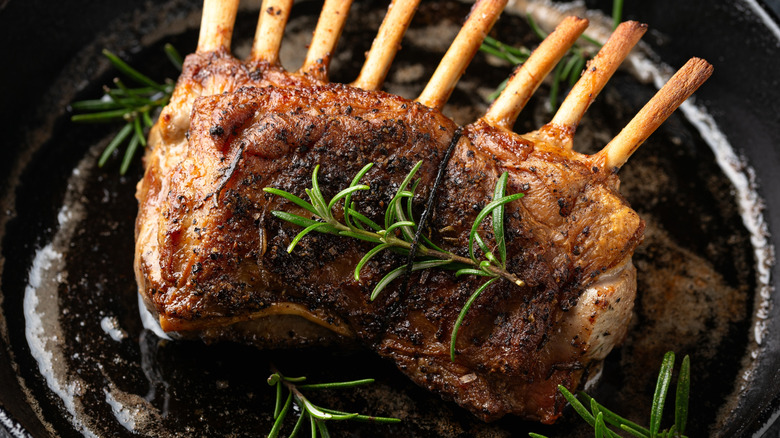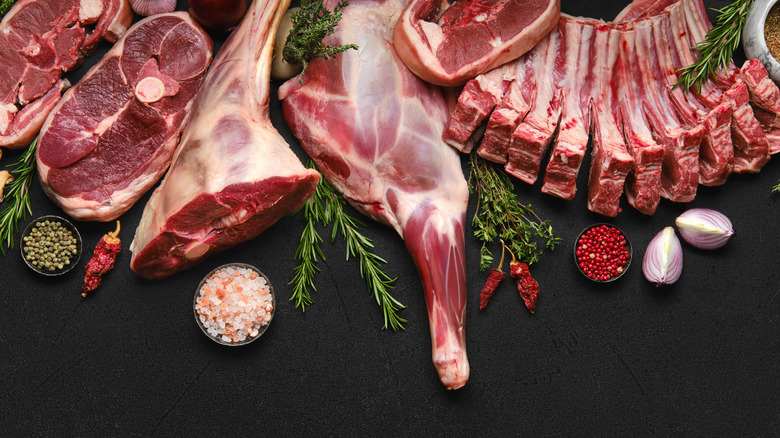The Crucial Method For Juicy Lamb With A Crispy Crust
Achieving both a crispy outside and tender, juicy inside with lamb is a challenge professional chefs rehearse for years to get just right. One such James Beard Award-nominated professional hailing from Austin's KG BBQ, Kareem El-Ghayesh, is an Ambassador for the American Lamb Board. As an expert in cooking lamb to perfection, we wanted to pick his brain regarding how to properly prepare lamb.
El-Ghayesh first noted that your choice of seasoning plays an essential role in how you get the surface crispy. "Crispy crust is hard to achieve with the marinades, so dry rubs you're much more likely to achieve a crispy bark if you use a dry rub," he said. Still, for a winning combination of a juicy center and beautifully charred exterior, correctly preparing the lamb is crucial.
Lamb is considered red meat, the same as pork and beef, but that doesn't necessarily mean it should be cooked the same way you prepare those proteins. "So if you give me a T-bone, I would probably want to pan sear it because with pan searing you can add butter, you can add more moisture," El-Ghayesh said. Lamb, on the other hand, is a different story. "Yeah, I am more of a reverse searer than a searer. I like the reverse sear better because you get a fresher sear instead of searing and then slow cooking." Reverse-searing meat means slowly baking it in the oven before quickly scorching it in a pan over high heat. Searing at the end of the process locks in the juices and ensures the crispy outside doesn't become soggy in the oven.
Starting with the right cut of lamb is essential
El-Ghayesh pointed out that the reverse sear technique is the best way to achieve a tender, crispy outcome on some cuts of lamb but not others. "Yes, it's hard to specify a cooking method without knowing which cut, because really the cut dictates how you should cook it," he said. "Lamb has also grading, just like beef. You have prime, choice and, good, these are the main grades."
The contrast between these designations boils down to marbling, also a major difference between ribeye and New York strip steak. Those white streaks of fat strewn throughout the flesh melt into the muscle when cooked, keeping it moist and boosting flavor. Generally, the better the grade, the more marbling it contains. "So picking the cut in the store that has higher marbling will just give you a better edge and not overcooking it," El-Ghayesh said.
When searching for the best cut in the grocery store, you typically have two options. El-Ghayesh said, "Most of the American lamb that you'll find in the store is either prime or choice." While either grade would be welcome as a classic part of the Easter dinner table, there is a difference in price as well as quality. Prime will typically be the more expensive option, but because it has more marbling, it might be worth it if you want your lamb to be as tender and juicy as possible. As for specific types of prime, El-Ghayesh said, "The lamb racks and the lamb leg, these two are ideal for reverse searing, yes."

